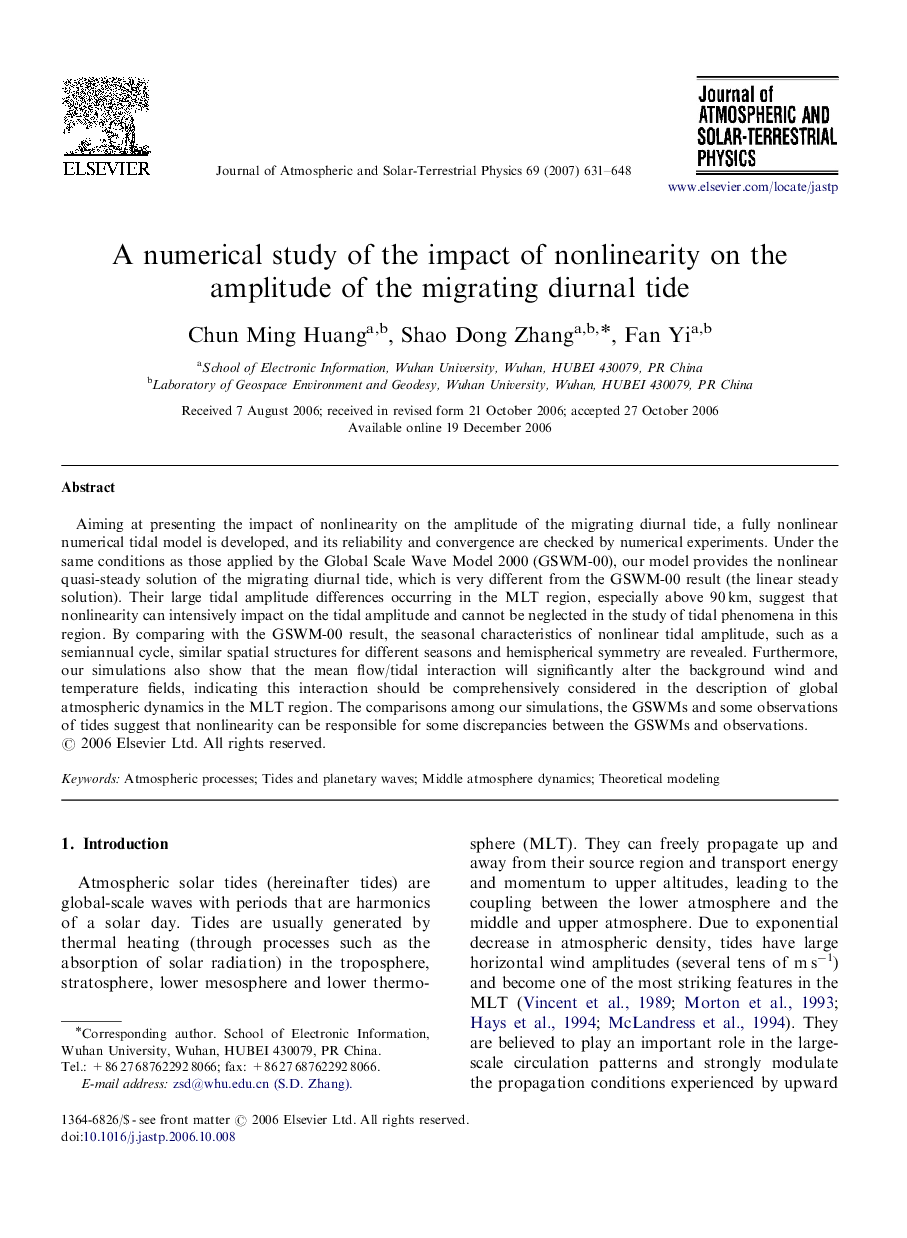| Article ID | Journal | Published Year | Pages | File Type |
|---|---|---|---|---|
| 1778112 | Journal of Atmospheric and Solar-Terrestrial Physics | 2007 | 18 Pages |
Aiming at presenting the impact of nonlinearity on the amplitude of the migrating diurnal tide, a fully nonlinear numerical tidal model is developed, and its reliability and convergence are checked by numerical experiments. Under the same conditions as those applied by the Global Scale Wave Model 2000 (GSWM-00), our model provides the nonlinear quasi-steady solution of the migrating diurnal tide, which is very different from the GSWM-00 result (the linear steady solution). Their large tidal amplitude differences occurring in the MLT region, especially above 90 km, suggest that nonlinearity can intensively impact on the tidal amplitude and cannot be neglected in the study of tidal phenomena in this region. By comparing with the GSWM-00 result, the seasonal characteristics of nonlinear tidal amplitude, such as a semiannual cycle, similar spatial structures for different seasons and hemispherical symmetry are revealed. Furthermore, our simulations also show that the mean flow/tidal interaction will significantly alter the background wind and temperature fields, indicating this interaction should be comprehensively considered in the description of global atmospheric dynamics in the MLT region. The comparisons among our simulations, the GSWMs and some observations of tides suggest that nonlinearity can be responsible for some discrepancies between the GSWMs and observations.
